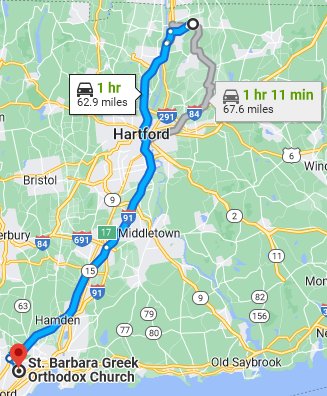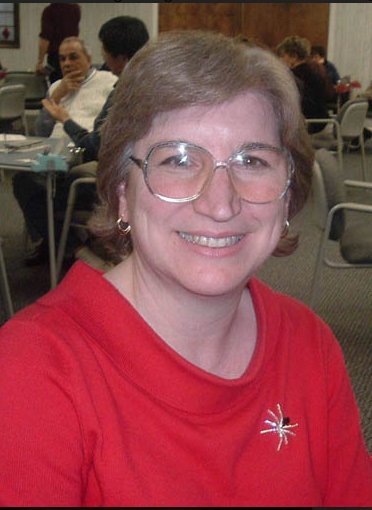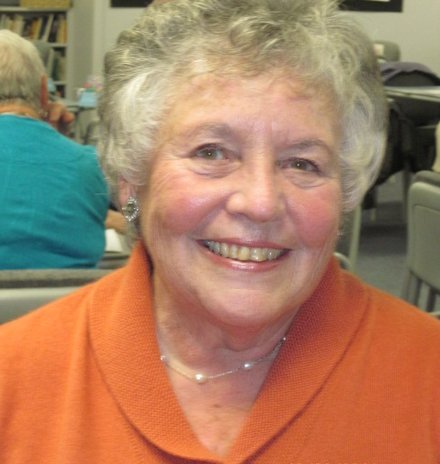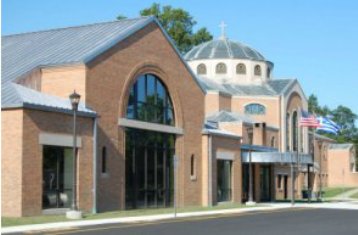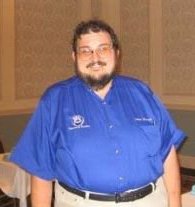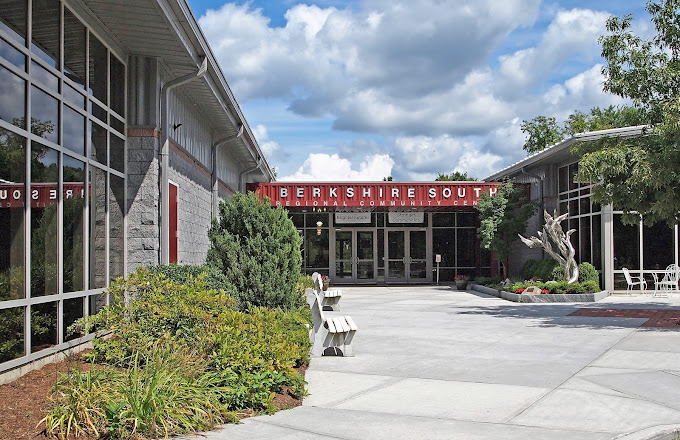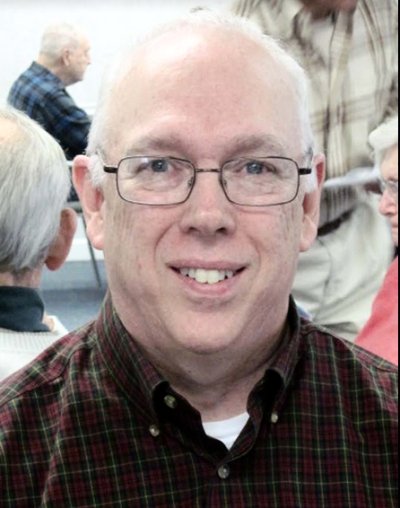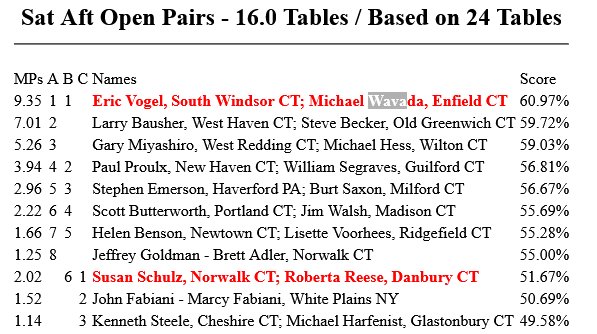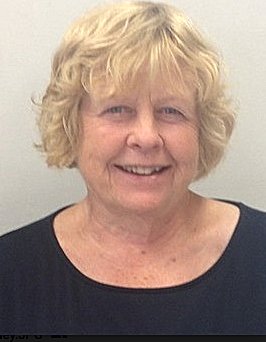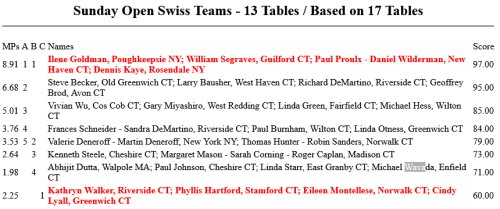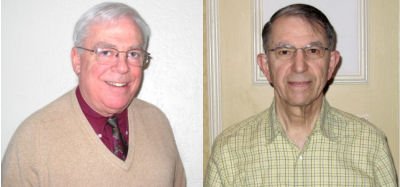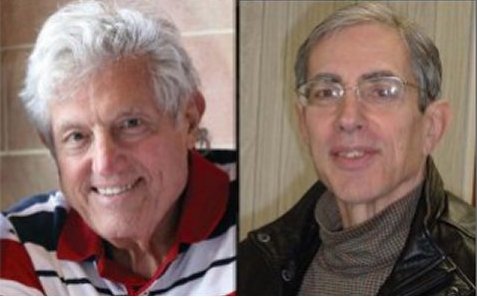Silver points games. Continue reading
Johnston Sectional in March: In January of 2024 Abhi Dutta asked me to play with him at the Rhode Island sectional tournament scheduled for March 2-3. I could not play on Saturday because it was my wife Sue’s birthday, but I agreed to play in the Swiss on Sunday. Abhi was out of town for most of the month of February, but he contacted me late in the month to report that he had acquired teammates. In Johnston I learned that our teammates were the DiOrios, Lou and Megan. I had worked with Megan on the committee for the NABC event in Providence in 2022 (introduced here), and I had played on a team with Lou some time before that.
I was not sanguine about our chances. The partnership of Abhi and me had really recorded only one good result (described here), and that was nineteen months earlier. Our more recent games were not memorable. I also did not remember great successes recorded for either Lou or Megan. The fact that we drew #13 did not raise my hopes, although I always remind people that for Wilt Chamberlain that number was reportedly lucky 20,000 times.2
In the first round Abhi and I played against Al Votolato and someone whom I did not know. The very first hand was weird. Al’s partner opened 1♦ in the second seat; Abhi passed; Al responded 1♠; I passed, and so did Al’s partner! Abhi made the mistake of doubling, which gave Al a chance to bid 2♦, which was the final contract. I asked Al if they had an agreement that allowed his partner to pass his response. He said that he was as surprised as I was. His partner at first defended his pass, but when he understood the situation he said that he did not realize that he had passed.
In the end, even though they were an A team, and we were a B team, we defeated them 29-0, which was a “blitz” that converted to the maximum victory point score of 20. We scored at least one imp on six of the seven hands, and the seventh hand was a push.
In the second round we played another A team, Dan Jablonski and Cilla Borras. They were both very good players whom I had played against several times. I made a horrible mistake in playing a 5♣ contract that Abhi put me in. For some reason I thought that we had nine trumps, not eight. I was therefore quite confident of making the bid when I dropped Dan’s queen on the second round of trumps. A little later, however, I mistakenly led a low diamond from the board. Cilla, who was on my right, ruffed it, and I underruffed even though I had a diamond! I took the requisite eleven tricks, but I was penalized one trick for revoking. Abhi insisted that he warned me when I did it.1
This faux pas cost us 11 imps. We would have lost the match anyway, but our running total of victory points was four fewer—21 as opposed to 25. This was not all bad because we got to play a much weaker B team in the third round, and we beat them 31-0—another blitz.
In the last round before lunch we played a much better B team, Mike McDonald and Tom Floyd. We beat them by 12 imps. At the break we had amassed 56 out of a possible 80 victory points. That was good enough for second place.
I had ordered a salad for lunch. I ate about half of it as well as a bag of chips and a Diet Coke. I sat by myself. I don’t know where my teammates went.
In the fifth round we played the team that was in first place. It included Sheila Gabay and Alan Watson, who had won both sessions of the pairs game on Saturday. The foursome had blitzed both of their last two opponents. Abhi and I played against another very fine pair, Max Siline and Carrie Liu. On the first hand I made 3NT, and our Sheila and Alan had a misunderstanding in their bidding. That was enough for a ten-imp swing, but we would have won the match anyway. The final score was 30-13. Abhi and I had no negative scores at all. I was wondering if it were possible to lose with no negative scores (Yes!), and I was worried that I would find out. I had played against Sheila’s teams at least six or seven times, and I had never won before.
I thought that I played pretty well in the sixth round, but we lost by 16 points to a very good B team. It seemed to me that most of the problems were at the other table. I was most proud of the fact that two of our twelve imps came from when I passed in the fourth seat.
In the last round we played against people whom I did not know. I again passed in the fourth seat, and this time it was worth five imps. Since our margin of victory in this match was only nine imps, I was very surprised to learn that we had won the event by two victory points over both the Siline team and the team from the Hartford Bridge Club (HBC)—Tom Gerchman, Linda Starr, and Bob and Ann Hughes. I was still in a foul mood because at the very end of the last hand Abhi had trumped a trick that I would have won anyway. That mistake cost us six imps, which would have given us two additional victory points. Even so, we brought home 7.15 silver masterpoints.
I did not receive much satisfaction from this result. I had made one huge and embarrassing mistake, and Abhi had made several smaller ones. However, out teammates were very excited about winning. They even asked Tom Gerchman (of all people) to take a photo of the four of us with a cellphone. He had a great deal of difficulty with the assignment.
Was our victory a fluke? I thought so at the time, but after examine the results, I am more inclined to think that we were the best team that day with that set of cards in a fairly weak field. We played all but one of the top teams. We never played against a C team. We beat the top-seeded team decisively in our match with them. We could easily have had quite a few more victory points than we did.
I still had a ninety-minute drive ahead of me. The traffic was slow, and for the first half hour the sun was really brutal even though I had on sunglasses and pulled down the visor as low as I could get it. The high temperature that day was 67 degrees.
On the way home I stopped at Big Y in Stafford and bought a cake for Sue. I should have done it so she could have enjoyed a piece on her birthday, but this was much better than nothing.
St. Patrick’s Day Sectional in Orange, CT: Bill Segraves did a tremendous job of setting up and running this tournament, which occurred the weekend of March 15-17. I am glad that he took the job of president. I would not have had the energy to pull something like this off. The date was the best that could be arranged, but it conflicted with the first weekend of the NABC spring tournament in Louisville. So, undoubtedly some of the best players could be expected to be at that event. That date also meant that it might be difficult to find a director. Robert Neuhart from Troy, NY, was hired. I had no previous familiarity with him.
The design and promotion of this tournament was much better than what was done for the previous ones. I thought that the St. Patrick’s Day theme, which I in fact suggested, was a little overdone, but people seemed to be having fun with it. I planned on wearing on Sunday my bright green sweater that my dad bought in Ireland. Before play started Bill paraded around in a hooded green jumpsuit and a green mask. To goose the Sunday attendance the games on Sunday were designated to support the Grass Roots fund.
A decision was made to increase the masterpoint limit for the Friday and Saturday limited pairs games to 750 masterpoints, but only non-Life Masters were allowed to play. This turned out to be a good decision. The limited games, which had been a problem, were pretty well attended throughout.
I decided to play all three days. Eric Vogel agreed to play with me in the pairs games on Friday and Saturday. I had difficulty finding a suitable partner and teammates for the Sunday Swiss. I sent out a solicitation to my usual list of potential partners, but the only responses that I received were from Buz Kohn, Joan Brault, and Terry Lubman. Terry said that she was still in Florida. Buz was the first to respond positively, but he backed out shortly thereafter. So, I agreed to play with Joan. No one expressed any interest in teaming up with us. So, I sent a request to the email address for partnerships that was on the flyer. Bill replied with an email that indicated that he would find someone. He eventually assigned us to play with Ivan Smirnov from Staten Island and Joe Lanzel from Foxborough, MA. I told Ivan that I would be wearing a bright green sweater with “Ireland” on the chest.
I commuted all three days by myself. Each trip to Orange took a little over an hour, but that included my usual stop at the McDonald’s in Cromwell to purchase a sausage biscuit with egg sandwich. The price at the McD at the end of the ramp for Exit 21 charged a dime less than the one in Hartford. However, the man taking the order on Sunday entered it as “sausage biscuit, add folded egg.” The cost was almost $1 less.
I left each day at about 8:25 and arrived at 9:30. The traffic was heavier on Friday, but it did not really slow me down. A strange thing happened with my car in the mornings. I was accustomed to turning on the front window defogger on cold days. This heated up the car on Saturday, but on Sunday it blew nothing but cold air.4
The return trips were as uneventful as the morning drives, except for the Sunday evening drive. The line of cars backed up on the parkway at the exit that led to I-91 north was more than a mile long. It took me more than ninety minutes to complete that trip.
I decided to wear a mask throughout the tournament. Almost no one except Bill and Frank Blachowski wore one.
Since I arrived on Friday morning before Eric did, I got in line to buy our entry fee. For some reason the director did not allow purchasing of both sessions. I charged the first session. Eric later bought the afternoon session. There was no problem with the transactions on Friday and Saturday. However, the computer connection with the card reading device did not work on Sunday. and so everyone had to pay in cash. I was the customer for whom the malfunction first was discovered. I don’t know if the problem was ever fixed.
The first thing that I noticed about the pairs games on Friday was that Peter Marcus was in attendance and was actually playing with Bill Segraves to fill out the movement. I had seen him at many tournaments, but I had only seen him play bridge once, and that was at the HBC.
The second peculiarity was that there were no clocks to keep track of the time remaining in each round. I cannot remember ever playing in a tournament in which there were no clocks. I never heard why this was the case in Orange. Perhaps the unit has depended on the directors to bring them.
Once play began it was pretty evident that, although the attendance was good (seventeen tables), the field was not as strong as it usually was. That was definitely reflected in the results. Eric and I were in first place after six rounds, but in the last round we were passed by a C team from the HBC, John Lloyd and Donna Simpson. We still won 5.84 points. I did not think that we played particularly well.
Eric and I had two egregious bidding mistakes in the morning session, but only one of them hurt us. Eric had apparently not reviewed our card thoroughly enough.
On one hand we were on defense after I had opened 1♠. I led the ace and then the queen. Eric ruffed it. After the hand I explained that when I led ace and then queen of a suit that I had bid, it meant that I also had the king. He asked why I didn’t just lead the king after the ace. I said that if I did, he would not know that I also had the queen.
Our level of play did not diminish in the afternoon, but our results dropped off a lot. I did not circle a single hand on the scorecard. We finished above 50 percent, but we did not make the overalls, and so we did not get any points.
We actually played better on Saturday. We earned over 9.37 masterpoints over the course of two days. That was not close to Rich DeMartino’s total. He won all three pairs games in which he participated.
We might have gone over the ten-point mark if Eric had not made an uncharacteristic blunder near the end. Acting as declarer, he intended to set up a cross-ruff for the last three tricks, but he discarded the wrong card from his hand. That left him with a heart and two trumps in both hands.
A strange situation occurred on Saturday. The opponent on my right was about to declare a hand. His partner was in the act of setting down the dummy when he accidentally dropped most of his cards on the floor. I did not look, but he said that some were face-up. He said that he was not able to get down on his knees to pick them up, and therefore he called the director, who was also not very spry. I volunteered to put my lead on the table and gather together the cards, but the director insisted on doing it himself.
Eric and I bid a slam in spades after he had opened 2♣. He had hearts and spades. We decided to change our response to the 2♠ follow-up so that the relay to 2NT could be broken if responder had spade support. This eliminated the ambiguity of the sequence 2♣-22♦-2♠-2NT-32♥-4♠. Previously it could have meant signing off in spades or Kickback for hearts.
Ordering lunch was embarrassing. I only wrote the six letters of my last name, but on both occasions the result was almost unreadable.
By the way, both lunches were good. The only problem with Friday’s salad with lots of meat and cheese on Friday was that the only beverage available was a small bottle of water. The sandwich on Saturday was even meatier. This caterer also brought cans of soft drinks. There were only two Diet Cokes, but I managed to claim one. The pizza on Sunday was OK, but the pairs game was still in process when the ninety-six people playing in the Swiss went to lunch. Usually there is enough pizza for seconds, but by the time that the pairs players ate, the teams were back in combat.
Our first round was against Debbie Prince’s team. We won by seven. In the second round we were blasted by 26 imps by a very good team. Joan and I thought that we had more or less held our own, but no hands showed positive results. Our teammates failed to set a 4♠ contract that I could see no way to make. They also bid an impossible slam that got doubled. We won the third round by 13 imps over a C team.
After lunch we played Mike Heider’s team. The results on two 3NT contracts startled me. On one I went down, and they made it at the other table. On the other they made it at our table with two overtricks, but our teammates did not even make the bid. In the fifth round we faced the team from the HBC that had done well in Johnston. Joan and I played against Ann and Bob Hughes. We thought that we had done pretty well, but we were worried about one hand on which we bid 3♠ but made 4. In reality, that hand was our only positive result in an extremely painful 17-imp loss.
Halfway through the sixth round against a team that obviously was over its head I lost interest and started playing badly. Nevertheless, we won the last two matches by 21 and 5 points to finish with four wins and 70 victory points—exactly average.
Our worst hand all day was the last one. We were playing Cappelletti, the only notrump defense that Joan will play. Cindy Lyall, sitting West, opened 1NT, and Joan doubled for penalty. I had a flat hand with only one honor, a queen. Cindy ended up making 3NT for 380 points. It would have been better for them to bid and make 3NT, but at the other table Joe went down in 1NT. Since I did nothing except follow suit and discard the four spot cards in hearts that I was dealt, I have no way to know whether Joan’s defense or Joe’s declarer play was more to blame for this fiasco.
Shekhar and Shashank won the afternoon session of the 0-750 pairs! They won almost three silver points in their first day at a tournament.
The attendance at the tournament was good through the entire weekend. That proved to me that good planning, good marketing, and a good schedule are still the keys to successful attendance in the world of tournament bridge.
1. If Abhi said that he warned me, and I am sure that he did. However, if I were the dummy, and my partner did what I did, I would have said, “Wait a minute. Are you sure that you did not have any diamonds? You underruffed!” I take great pride the fact that none of my partners has revoked in more than fifteen years.
2. In his 1991 book, A View From Above Wilt claimed to have slept with 20,000 different women during his life.
3. In the period after the pandemic I have had trouble getting teammates from the HBC. Perhaps the problem is the timing. Some arrangements are made many months in advance; many are made at the very last minute. My efforts seem to fall in the middle.
4. I brought the car into Lia, my dealership, on Friday, March 22. They gave me a lift home in their shuttle. I had only been there a minute when they called to tell me that the heater was working perfectly. I had tried it on Tuesday and Wednesday without success. There must be more to this story.


